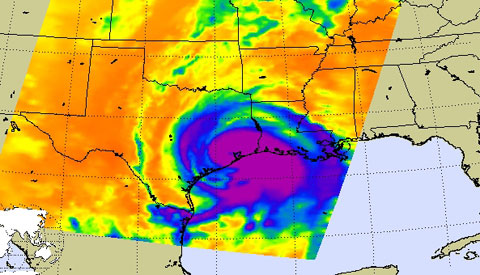|
|||||
|
|||||
+ Accessibility + Multimedia players |
|
EARTH-OBSERVING MISSIONS Current JPL-developed and managed satellites and instruments Active Cavity Irradiance Monitor Satellite Monitors total sun energy that reaches Earth. + Mission home page Atmospheric Infrared Sounder on Aqua satellite Measures air and surface temperature, clouds, humidity. + Instrument home page Microwave Limb Sounder on Aura satellite Improves understanding of ozone and precursors. + Mission home page Tropospheric Emission Spectrometer on Aura satellite Observes ozone and gases in the troposphere, the part of atmosphere where we live + Instrument home page CloudSat Revealing the inner secrets of clouds. + Mission home page Gravity Recovery and Climate Experiment Measures Earth's gravitational field. + Mission home page Ocean Surface Topography Mission/Jason 2 A follow-on to Jason 1, this mission charts sea level, and its data will help improve climate and weather forecasts. + Mission home page Jason-1 Measures ocean level changes and El Niño. + Mission home page Quick Scatterometer Measures ocean surface winds. + Mission home page Advanced Spaceborne Thermal Emission and Reflection Radiometer on Terra satellite Takes high-resolution images, global and local. + Instrument home page Multi-angle Imaging Spectro-Radiometer on Terra satellite Images Earth and aerosols from nine angles. + Instrument home page Shuttle Radar Topography Mission Acquired the most complete near global mapping of Earth's topography. + Mission home page + Other Earth missions |
|||||||||||||||||||||||||||||||||||||||||||||
| + Freedom of Information Act |
|

















